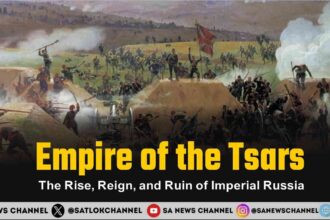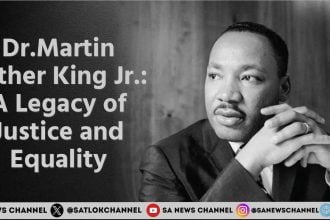Thomas Edison, one of the most renowned inventors in history, revolutionized the world with his groundbreaking creations. From the invention of the light bulb to the development of the phonograph, Edison’s contributions have had a lasting impact on society. In this article, we will delve into the life and achievements of this innovative pioneer and explore the legacy he left behind.
Early Life of Thomas Edison
Birth and Family Background
Thomas Alva Edison was born on February 11, 1847, in Milan, Ohio, into a family that would play a significant role in shaping his future. He was the youngest of seven siblings in a middle-class household, where the values of hard work and creativity were instilled from an early age. His father, Samuel Edison Jr., was not only an activist but also an inventor, which likely influenced Edison’s own inventive spirit. Samuel had a diverse career, including work as a carpenter and a political figure, which exposed young Thomas to a variety of ideas and the importance of perseverance.
Edison’s mother, Nancy Matthews Elliott, was a school teacher who placed a strong emphasis on education and intellectual curiosity. Her dedication to teaching and her belief in the value of knowledge would have a lasting impact on Edison, nurturing his natural curiosity and encouraging his inventive nature.
Childhood and Education
Edison’s formal education was notably brief and somewhat tumultuous. He attended a local school for only a few months before his teacher labeled him an “addled child,” criticizing his hyperactivity and inability to concentrate. This negative assessment deeply affected Edison, and his mother, recognizing his potential, decided to withdraw him from school. She took it upon herself to educate him at home, teaching him reading, writing, and arithmetic.
This personalized education allowed Edison to explore his interests freely and nurtured his passion for learning and experimentation. His mother’s unwavering support and encouragement were crucial in fostering his intellectual growth, instilling in him a love for knowledge that would last a lifetime.
Early Inventions and Entrepreneurship
From a young age, Edison demonstrated a keen interest in mechanical and chemical experiments. His inquisitive nature led him to explore the world around him, often dismantling household items to understand how they worked. By the age of 12, he began working as a train boy on the Grand Trunk Railroad, where he sold newspapers and snacks to travelers. This job not only provided him with a sense of independence but also exposed him to the workings of the railway system.
During this period, he established a small laboratory in a baggage car, where he conducted experiments and learned about telegraphy. His entrepreneurial spirit shone through as he sought to capitalize on his surroundings, and his enthusiasm for innovation was evident even in his youth. This early exposure to business and technology laid the groundwork for his future endeavors as an inventor and entrepreneur.
Self-Education and Apprenticeship
Despite having a limited formal education, Thomas Edison was a passionate reader and deeply committed to self-education. His early schooling was cut short due to various challenges, including his struggles with traditional classroom settings, which led his mother to homeschool him. This unconventional educational path did not deter him; instead, it ignited a fervent desire to learn.
Edison spent countless hours immersed in books, exploring a wide array of subjects that spanned science, engineering, and literature. His voracious reading habits allowed him to absorb knowledge from the works of great thinkers and innovators, which would later influence his own inventive processes.
Inventions and Discoveries Thomas Edison
The Light Bulb
Thomas Edison is widely recognized for his development of the practical incandescent light bulb. Although he did not create the first electric light, his enhancements to existing models made them suitable for extensive application. Edison’s incandescent bulb featured a high-resistance filament and an improved vacuum within the bulb, significantly extending its lifespan compared to earlier versions.
In 1879, he showcased his successful prototype, which resulted in the formation of the Edison Electric Light Company. This invention not only transformed indoor illumination but also established the foundation for the electric power sector, greatly influencing everyday life and the industrial environment.
Phonograph
In 1877, Edison introduced the phonograph, the inaugural device capable of recording and reproducing sound. This innovative invention represented a pivotal advancement in audio technology. The phonograph operated using a cylindrical drum covered in tinfoil to capture sound waves generated by a person’s voice.
By rotating the cylinder and employing a stylus to follow the recorded grooves, the device was able to recreate the sound. The phonograph transformed the music industry by facilitating the storage and playback of audio recordings. It set the stage for subsequent developments in audio recording and playback technology, ultimately shaping the contemporary music industry.
Motion Picture Camera
Edison’s influence on the motion picture sector includes the creation of the Kinetograph, one of the earliest motion picture cameras, along with the Kinetoscope, a device for viewing films. These inventions enabled the recording and exhibition of moving images, establishing the groundwork for the film industry.
In partnership with his assistant, William Kennedy Laurie Dickson, Edison devised a system that utilized perforated celluloid film to capture a series of images. The Kinetoscope permitted individual viewers to observe short films through a small viewing hole. These innovations transformed entertainment and contributed to the emergence of the first movie studios and theaters.
Alkaline Storgae Batteries
Edison was instrumental in the development of long-lasting alkaline storage batteries, which significantly influenced multiple industries. His endeavors in this field commenced in the early 20th century, with the aim of producing a more efficient and durable battery compared to the conventional lead-acid batteries. The alkaline battery designed by Edison utilized nickel and iron electrodes along with a potassium hydroxide electrolyte, resulting in enhanced energy density and longevity.
Also Read: The Fascinating History of China: From Ancient Civilizations to Modern Superpower
These batteries were employed in various applications, including electric vehicles, railroad signaling, and marine buoys. Furthermore, Edison’s innovations in battery technology played a crucial role in the advancement of portable power sources, shaping the future of energy storage solutions.
Electric Power Distribution
Edison’s groundbreaking contributions to electric power distribution revolutionized electricity generation and consumption. In 1882, he inaugurated the first commercial electric power station in New York City, known as the Pearl Street Station. This facility supplied direct current (DC) electricity to local residences and businesses. Edison’s system encompassed generators, underground cables, and metering devices, establishing a comprehensive network for electric power distribution. Although alternating current (AC) systems later gained prominence, Edison’s foundational work was pivotal in the development of modern power grids and facilitated the widespread use of electric lighting and appliances.
Other Notable Inventions
Throughout his extensive career, Edison secured over 1,093 U.S. patents along with numerous international patents. His inventions covered a wide array of fields, including telegraphy, mining, and even a mechanism for recording legislative votes. Among his notable inventions are the electric pen, an early duplicating machine, and the carbon transmitter, which enhanced the clarity and range of telephone communications. Edison’s unwavering commitment to innovation and his capacity to refine existing technologies profoundly impacted various industries. His contributions to science and technology have established a lasting legacy, solidifying his status as a pivotal figure in history.
Business Ventures of Thomas Edison
Edison Electric Light Company
In 1878, Thomas Edison established the Edison Electric Light Company with the primary goal of developing and marketing his groundbreaking electric light bulb. This venture was pivotal in the commercialization of electric lighting, marking a significant shift in how people illuminated their homes and businesses.
The company’s efforts culminated in the creation of the first commercial power station in New York City in 1882, which provided electricity to a select group of customers. This innovation not only showcased the practicality of electric lighting but also laid the groundwork for the modern electric utility industry, fundamentally changing urban life and industry.
Edison Machine Works
Edison founded the Edison Machine Works, a company dedicated to the production of electric motors and generators. This enterprise played a crucial role in advancing electric power technology, enabling the development of more efficient and reliable electrical systems. The innovations produced by Edison Machine Works facilitated the widespread adoption of electric energy across various sectors, including manufacturing and transportation. By providing the necessary machinery to harness and distribute electricity, Edison Machine Works contributed significantly to the electrification of America and the world.
Edison Phonograph Company
In 1877, Edison invented the phonograph, a revolutionary device that could record and reproduce sound. Recognizing the commercial potential of his invention, he launched the Edison Phonograph Company to manufacture and distribute phonographs.
The company quickly became one of the largest producers of phonographs globally, transforming the music industry and paving the way for the future of audio recording and playback. Edison’s phonograph not only entertained but also influenced the way music was consumed, leading to the development of the recording industry as we know it today.
Edison Portland Cement Company
Edison also ventured into the cement industry by founding the Edison Portland Cement Company. He applied his innovative spirit to this sector by developing a new iron ore milling process that improved the quality and efficiency of cement production. Additionally, Edison identified a market for selling waste sand to cement manufacturers, which not only reduced production costs but also promoted sustainability by repurposing industrial byproducts.
His contributions to the cement industry demonstrated his ability to apply scientific principles to practical problems, further solidifying his reputation as an inventor and entrepreneur.
General Electric
In 1892, Edison merged several of his enterprises, including the Edison Electric Light Company and the Edison Machine Works, to create the General Electric Company (GE). This merger marked a significant milestone in Edison’s career and the history of American industry and GE was evolved.
Legacy of Thomas Edison
Innovations and Patents
Thomas Edison is recognized for holding more than 1,093 U.S. patents, along with numerous international patents. His inventions encompassed a wide range of fields, including electric lighting, sound recording, motion pictures, and electric power distribution. His contributions established the groundwork for many contemporary technologies and industries.
Industrial Research Laboratory
Edison founded the first industrial research laboratory in Menlo Park, New Jersey, often referred to as the “Wizard of Menlo Park.” This facility set a precedent for future research and development centers, promoting innovation and collaboration among scientists and engineers.
Impact on Modern Life
The inventions of Edison have significantly influenced modern existence. The incandescent light bulb transformed indoor illumination, the phonograph revolutionized the music sector, and the motion picture camera served as a cornerstone for the film industry. His advancements in electric power distribution facilitated the widespread use of electricity, enhancing the quality of life for countless individuals.
Cultural Influence
Edison’s legacy transcends his inventions. He is celebrated as an emblem of American creativity and determination. His narrative of overcoming obstacles and achieving success through diligence and innovation continues to motivate generations of inventors and entrepreneurs.
Thomas Edison’s entrepreneurial endeavors and enduring legacy have made a lasting impression on the world, shaping the trajectory of modern technology and industry.
Personal Life of Thomas Edison
Marriages and Family
Thomas Edison entered into matrimony twice. His first spouse, Mary Stilwell, gave birth to three children: Marion, Thomas Jr., and William. Following Mary’s death in 1884, Edison remarried in 1886 to Mina Miller, with whom he had two additional children: Charles and Theodore. Edison’s commitment to his professional endeavors often resulted in him spending extensive hours in his laboratory, which influenced his family life.
Health and Personality
Edison was recognized for his remarkable work ethic, frequently dedicating long hours to his projects, often extending into the night. Despite facing health issues, including hearing impairments, he remained steadfast in his commitment to innovation. His character was defined by perseverance, a strong sense of curiosity, and an unwavering drive for progress.
The Enduring Influence of Thomas Edison
- Technological Contributions: Edison’s groundbreaking inventions, such as the incandescent light bulb, phonograph, and motion picture camera, have profoundly influenced modern society. His pioneering work in electric power distribution laid the foundation for the widespread use of electricity, transforming industries and significantly improving the quality of life for many.
- Cultural Influence: Often referred to as the “Wizard of Menlo Park” due to his extraordinary creativity, Edison’s legacy extends beyond his inventions. He is recognized as a symbol of American ingenuity and perseverance. His story of overcoming challenges and achieving success through hard work continues to inspire countless inventors and entrepreneurs across different eras.
- Industrial Research Laboratory: The creation of the first industrial research laboratory in Menlo Park, New Jersey, by Edison established a model for future research and development facilities. This center became a hub for innovation and collaboration among scientists and engineers.
- Philanthropy and Education: Beyond his technological achievements, Edison was actively involved in philanthropic initiatives, supporting various educational and scientific institutions. His contributions to education and research have had a lasting impact on the advancement of knowledge and technology.
- The personal life and lasting legacy of Thomas Edison reflect his dedication to innovation, resilience, and the betterment of society. His influence continues to serve as a source of inspiration and significance in the contemporary world.
Summary
In summary, the biography of Thomas Edison serves as a powerful illustration of innovation and determination. His revolutionary inventions have significantly transformed our daily lives and work practices, establishing a legacy that remains a source of inspiration. Reflecting on his life and accomplishments, one cannot help but appreciate the profound influence an individual can exert on society. Thomas Edison will forever be recognized as a trailblazer and visionary, with his legacy enduring through the myriad of innovations associated with his name.
The Supreme God According to Saint Rampal Ji Maharaj: Kabir God
Supreme God Kabir
Saint Rampal Ji Maharaj identifies God Kabir as the Supreme Being who imparts comprehensive knowledge and wisdom to humanity. He asserts that genuine understanding and spiritual awakening are achieved through the teachings of Kabir saheb and adherence to the divine path established by this entity. The teachings of Kabir saheb are rooted in ancient texts, including the Vedas, Puranas, Bhagavad Gita, Quran, and the Bible, which Saint Rampal Ji interprets as affirming Kabir’s status as the Supreme God.
Kabir God as the Supreme Creator
According to Saint Rampal Ji’s analysis of these scriptures, Kabir saheb transcends the roles of a mere poet or saint; He is the Supreme Creator Who has come to guide humankind. In this perspective, Kabir saheb embodies an all-powerful, omnipresent, and omniscient force that oversees the entirety of creation, possessing profound knowledge of all sciences, spiritual realities, and the cosmos. This Supreme God is credited with the creation and maintenance of the universe and holds the authority to liberate souls from the cycle of reincarnation.
Path to Salvation
Saint Rampal Ji elucidates that true salvation, as granted by the Supreme God Kabir, entails rising above the material existence to achieve eternal bliss in the spiritual domain of Satlok. His teachings outline three fundamental elements of the path to salvation: initiation, adherence to a scripture-based worship practice, and the pursuit of a virtuous life.
- Initiation (Naam Diksha): Saint Rampal Ji Maharaj emphasizes the necessity of receiving initiation from a genuine spiritual leader sanctioned by the Supreme God. This initiation process includes the impartation of sacred mantras and spiritual wisdom, which are vital for the soul’s progression toward liberation. The mantra acts as a spiritual compass and safeguard, assisting devotees in their connection with the Supreme God and guiding them along their spiritual journey.
- Scripture-Based Worship: Adhering to the principles outlined in sacred texts is of paramount importance. Saint Rampal Ji emphasizes that numerous religious customs have strayed from their foundational teachings, incorporating practices that lack scriptural endorsement. Genuine worship, as articulated by Him, entails the recitation of sacred mantras received during initiation, contemplation of the Supreme God, and engaging in devotion with a sincere heart and mind.
- Righteous Living: Embracing a life characterized by righteousness and moral integrity is vital for achieving salvation. This encompasses refraining from sinful behaviors, engaging in virtuous actions, and upholding ethical standards. Saint Rampal Ji promotes a way of life that embodies the virtues of compassion, honesty, non-violence, and humility. Adhering to these values not only purifies the soul but also harmonizes the devotee’s actions with divine intentions.
FAQs related to Thomas Edison
Question: Was Thomas Edison deaf?
Answer: Thomas Edison experienced complete deafness in one ear and had significant hearing difficulties in the other.
Question:How many times did Thomas fail?
Answer: After 2774 times (as per records) a functional design of an electric light bulb was achieved.
Question: Did Edison won the Nobel Prize?
No









